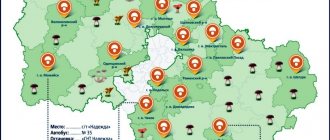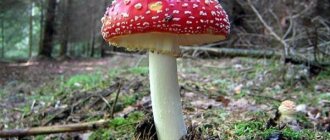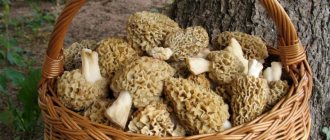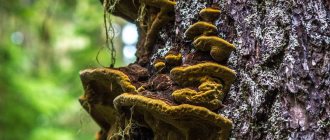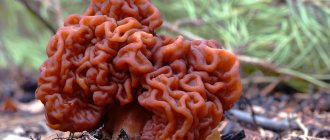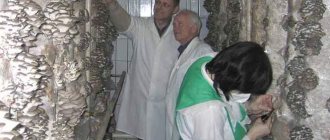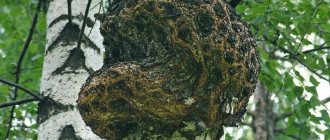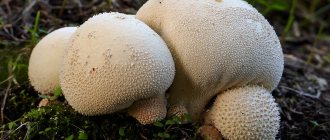Mushrooms
0
2264
Article rating
Kira Stoletova
Mushrooms are a special group of living organisms that contain a huge amount of protein. They are sold at the market or in a store, but it is much more pleasant to pick mushrooms yourself in September.
Mushrooms in September
Classification and description
Mushrooms grow in September in deciduous, coniferous and mixed forests, and in short - in all their types. They are also found in artificial forest plantations.
Before picking mushrooms in September, you should understand the varieties and their names, understand which mushrooms can be collected and which ones should be discarded.
There are a large number of varieties of all mushrooms. There is no general world classification. On the territory of Russia they are divided into 4 categories:
- maximum value;
- less nutritious and tasty;
- with mediocre taste;
- low-value, with weakly expressed taste qualities.
Type 1 (category) includes porcini mushrooms, boletus mushrooms, saffron milk caps and yellow milk mushrooms. The most favorable regions for collecting such mushrooms are the Tula region and the Moscow region.
Category 2 includes boletus, boletus and champignons. They have slightly less nutritional value and flavor.
Category 3 in Russia includes edible mushrooms with average nutritional value and taste (moss mushrooms, russula and honey mushrooms). In the Voronezh and Belgorod regions, russula and milk mushrooms are collected in the fall. In the Altai Territory, they are less common in September; the main period for their collection is in the summer months.
Category 4 includes mushrooms with a unique taste and low calorie content (oyster mushrooms, puffballs or variegated moss mushrooms).
Based on their edibility, September mushrooms, like all others, are divided into the following groups or categories:
- edible;
- conditionally edible;
- inedible;
- poisonous.
This classification is based on safety of consumption and ease of preparation:
- Edible mushrooms are safe to eat and cannot be poisoned by them, even if they are raw.
- Conditionally edible ones cannot be eaten raw: fresh representatives of the category have an unpleasant taste. They are pre-soaked, then boiled or dried.
- Inedible mushrooms are safe for human health, but tasteless, inedible mushrooms. They are not used in cooking.
- Poisonous mushrooms are characterized by the fact that toxic substances cannot be removed from their fruiting bodies by simple culinary techniques at home. Eating them is life-threatening.
In the Tver region
The village of Rozhdestveno is considered a mushroom place located near Tver. Mostly mushroom pickers visit the forests near the village, there are a lot of boletuses, boletuses, boletuses, and boletuses here. You can get to the village by direct bus from the bus station; you need to get off the bus at the “Plant 1 Maya” station, which is located next to the village.
There are also many mushroom places in the area called “Vasilievsky Mokh”, located near Tver, and starting from the village of Zavolzhsky. You can get to this mushroom place by direct flight, without transfers, from the bus station.
From the village of Kalinovo, along the road to Staritsa, a lot of mushrooms are collected, mainly saffron milk caps and chanterelles. You can get there by bus, which goes to Danilovsky, and then on foot.
Types of autumn mushrooms
Mushrooms need high humidity
Each month corresponds to certain types of mushrooms growing by this time.
These mushrooms can be collected in September:
- late boletus;
- honey mushrooms;
- autumn oyster mushrooms;
- swamp birch trees;
- white pine laticifers;
- late russula.
The best mushroom weather is high humidity and air temperature. This is typical for the last days of August and September. In the south of the country, the period of intensive collection lasts until the end of October.
No sooner have the summer chanterelles and hornbills left in the Volgograd and Saratov regions than autumn honey mushrooms are already appearing. And in the Krasnodar Territory, Samara and Bashkiria, black milk mushrooms and late boletus ripen. Novosibirsk is located in central Russia: in these forests in September, under the spruce trees, you can feel the amazing and at the same time strong aroma of saffron milk caps. And southern Crimea is famous for its black and white row, which is harvested until frost. In September, these mushrooms are easy to find even on the outskirts of the forest.
To make it easier to navigate during the “silent hunt”, you should first carefully study the description of popular mushrooms in the area where they are collected.
Honey fungus
These fungi grow on stumps and parasitize living trees. They are easy to find on the trunks of fallen forest trees and in forest thickets. They grow up as families.
Representatives of this group are easily recognized by their appearance:
- cap up to 8 cm in diameter;
- hollow stem up to 15 cm in height, with a ring at the top (almost under the cap);
- light beige color;
- The shape of the cap is round and convex.
They grow abundantly in the presence of high air humidity (up to 85%), so it is easier to find them in old forests, where there are a lot of fallen leaves and fallen trees. Honey fungus is a dangerous parasite of trees that can easily attack living ones and kill them very quickly.
Irina Selyutina (Biologist):
Autumn honey mushrooms bear fruit until the end of autumn. Although they grow on all types of wood, they can sometimes be found on soil. This is what misleads the inexperienced mushroom picker. In fact, everything is much simpler - under the soil layer there is rotting wood, completely invisible from the outside. It is this area that becomes the site of mycelium development, and the fruiting bodies seem to “misinform” a person by emerging to the surface of the soil above it. They grow in clusters and families, and families can be very, very significant.
By the way. Very often, under the name “autumn honey fungus” there are two species hidden: the autumn honey fungus itself and its fellow northern autumn honey fungus, the distinctive features of which can only be seen through microscopic examination.
They are nutritionally more valuable than vegetables. They contain many macro- and microelements and vitamins C, A and group B.
Oil can
One of the most popular and favorite types among mushroom pickers is the butterdish. Among them there are those that belong to late September. They are consumed fried, boiled, salted, pickled and dried. They can be successfully frozen for further preparation. At the same time, the fruiting bodies retain all their beneficial properties and external qualities.
Butterflies grow in well-lit clearings or forest edges. Sometimes they are found on the sides of roads. But you shouldn’t take mushrooms there, because they accumulate carcinogens from cars passing by. Therefore, they and other mushrooms are often called “bioaccumulators” of harmful compounds.
They have a convex, slimy cap, 13 cm in diameter. The color varies depending on the age of the organism, from brown with a yellow tint to dark brown. Leg up to 10 cm high, without upper ring.
Porcini
White mushroom is valued for its taste
The porcini mushroom does not darken when cut. Its color remains white during any cooking.
The porcini mushroom is considered the generally recognized “king” in the mushroom kingdom, the most valuable and tasty. Its cap reaches 45 cm in diameter. It is olive-yellow when young and then turns brown as it ages. The leg is up to 26 cm in diameter, widening downwards, smooth, with a fine surface mesh. The pulp is homogeneous, white.
This mushroom is suitable for any cooking, drying and freezing. The aroma and taste are bright, but they are best manifested when dried, when excess moisture is removed from the pulp.
It grows in different regions of the country, singly and in groups, in mixed forests.
Black milk mushroom
The largest September mushroom is the black milk mushroom. It is great for pickling for the winter. Its cap is up to 32 cm in diameter, lamellar at the bottom, crispy and pleasant to the taste (but only after pre-treatment). Its color is olive in a young organism and almost black in an older one. The height of the leg reaches 20 cm.
Irina Selyutina (Biologist):
Black or gypsy milkweed is a mycorrhiza-former and enters into a symbiotic relationship with birch. You can find it in mixed forests where birch is present or in birch forests. At the same time, it forms large groups growing in moss or is found on the forest floor, in grass, near forest roads, and in well-lit places.
This mushroom belongs to the category of conditionally edible mushrooms. That is why it is used for food only after careful and very lengthy pre-treatment to remove bitterness - soaking with the obligatory regular change of water. Some prefer boiling. When pickled, the mushroom acquires a purple-burgundy color.
It does not lose its properties when frozen, but is not suitable for drying and frying.
Boletus
It is also called redhead. He acquired this name because of the color of his hat. It is bright orange or even red. It is very difficult not to notice such a bright representative of forest gifts. Also, a feature of the boletus is that at the point of cutting it changes its color and becomes bluish. It is an edible species. Most often it can be found in mixed forests. Aspen is most favorable for boletus mycelium, so most often it grows under this tree.
Redhead can grow in different sizes. Its cap can grow from five to twenty centimeters. There are giants whose hat diameter is thirty centimeters. At a young age, these mushrooms have a hemispherical hat, and over time it acquires a more elongated shape. The skin that covers the hat does not secrete mucus and is dry in most cases. Most often it has a velvety surface.
A variety of dishes are prepared using boletus mushrooms. They are great for pickling, drying, boiling and frying.
Boletus
Useful properties of mushrooms
Mushrooms contain a large number of useful macro- and microelements, vitamins and minerals that are beneficial to the human body.
Potassium, phosphorus, iron and sodium in one serving of autumn mushrooms are enough to replenish the daily requirement required for a person.
Eating them regularly stabilizes the functioning of the entire body and improves its functions. They contain high-quality proteins and amino acids, such as alanine, threoniline, lysine, stearic and glutamic acids, as well as natural antibiotics. Such a set of useful substances necessary for the human body is not found in any other living organism.
With low calorie content, they quickly cause a feeling of fullness. This is due to the high protein content in them, which is several times more than in meat and eggs. The average calorie content of 100 g of champignons is 25 kcal, white - 35 kcal, and russula only 18 kcal. They are useful when following a diet. However, it is important not to forget that during any type of cooking, the calorie content of mushrooms changes, and not in the direction of decrease.
Forest gifts are useful for strengthening the nervous system due to their high content of B vitamins. They strengthen hair and nails and promote skin regeneration.
They are indispensable for strengthening the circulatory system. Under their influence, the walls of blood vessels restore their elasticity and ability to perform “professional activities.” Melanin in mushrooms serves as a natural antioxidant.
boletus
They got their name due to their location. Most often they germinate in birch groves or in areas where birch trees grow. For mushroom pickers, boletus mushrooms are one of the most beloved forest gifts. Because it is considered not only a tasty product, but also very healthy. They contain a large number of useful microelements. Boletus mushrooms are a low-calorie product. They are ideal for consumption by people who follow a healthy diet. Eating this mushroom helps remove toxins from the body. With regular use, kidney function improves.
Boletus is not a poisonous species, but if improperly processed and stored for a long time, it can cause poisoning or allergic reactions.
boletus
Harm and precautions
But despite all the benefits they bring to the human body, there are still certain restrictions and culture of their consumption:
- For people suffering from gastrointestinal problems, eating mushrooms should be limited or eliminated completely. They are difficult for digestion due to the chitin they contain, and they weigh down dishes.
- Small children and pregnant women should not eat this product. Pregnant women may experience allergic reactions.
- It is better to combine mushrooms with potatoes, vegetable salads, porridge or bread to improve digestion. Consuming it with meat will make the food heavy on the liver and slow down digestion.
- Alcohol with mushroom dishes will “thicken” the protein in the stomach, which will complicate the process of digesting food. As a result, you may experience sensations similar to poisoning.
boletus
The boletus has a mild taste, which is why mushroom pickers hunt for it. The mushroom has a round cap of medium thickness. The maximum diameter is 15 cm. The color of the upper part is light brown, the peel is smooth. A tall, straight, but not thick leg with a scaly surface. The mushroom is soft in the middle; if you break it, a bright aroma immediately appears. Young boletuses are crispy, but with age the flesh becomes loose.
You can find boletus in deciduous or coniferous forests. The main thing is that birch trees grow nearby. Moreover, more mushrooms are observed under old trees. Boletus flowers love light, so they can be found in sunny meadows. The best time for harvesting begins in the second half of August and lasts until the end of September. If the autumn is warm, then you can find mushrooms in October.
It is easy to confuse it with a variety of yellow mushroom, but the poisonous mushroom has a stem covered with a net. In addition, if you break it, the flesh immediately turns red. In boletus it will remain white for a long time.
Rules for collection and use
Each species has its own location: under trees, on forest edges or on stumps. You should not neglect the rules of collection, because if you do not follow them, it is easy to get poisoned even by edible mushrooms.
These organisms accumulate toxins if they grow near the road. Do not place damaged, “rotten” mushrooms next to healthy ones. You should not collect them in plastic bags, from which forest organisms will absorb chemical compounds that are harmful to humans, especially released by artificial materials in hot weather. In addition, in such a package they will suffocate within a few hours of your journey through the forest.
It is best to collect mushrooms away from the highways, in proven and familiar places. They need to be placed in wicker baskets made of natural materials, immediately selecting the good ones, and throwing away the rotten and wormy ones without pity.
Before cooking, the fruiting bodies should be sorted again and then soaked. After frying or boiling, eat immediately, do not store in the refrigerator for several days, and do not reheat on the stove several times. They serve as a good environment for the growth of bacteria when stored in finished form.
Chanterelles
This mushroom is a common forest gift. It is found throughout Europe. Chanterelles are frequent guests of coniferous, birch or mixed forests. Among many other species, chanterelles are distinguished by their bright colors. Most often they are yellow, with bright shades, or orange in color. In its shape, the chanterelle's hat resembles an umbrella, which is turned inside out. The upper part of the chanterelle grows from three to ten centimeters in diameter. The leg has a cylindrical shape. It gradually fuses with the upper part of the chanterelle. The peculiarity of this variety is that they can never be found in the state of a wormy mushroom.
Chanterelles are often used as a base for preparing a variety of dishes. They are suitable for frying, pickling and drying. In any condition, they emit an excellent aroma and do not lose their taste. Chanterelles leave a slight bitter aftertaste, but this adds some zest to the dish.
Chanterelles
Application
Traditional and official medicine uses them to create medicines and treat various diseases. Mushrooms have not been fully studied by scientists. They are considered a separate kingdom, which received its name - Mushrooms and is located systematically between plants and animals, because they have characteristics of both. Some experts think that underground mycelium covers the entire globe, while others are sure that they are an extraterrestrial life form. The work on studying the properties does not stop. Many are used to obtain active antimicrobial drugs and antibiotics.
The antibiotic lactarioviline was obtained from camelina, and mycomecitin was obtained from govorushka. Anthelmintics are made from chanterelles. Extracts from some of the cap mushrooms treat staphylococcus and blood poisoning.
Honey fungus is used to combat intestinal and thyroid problems.
When are boletus mushrooms collected?
In a warm, rainy summer, the first seedlings can be found in the forest towards the end of June, but the main, first wave of development of fruiting bodies occurs in July, and lasts a whole month. This is followed by a long pause in fruiting, until the middle or end of September. Autumn mushrooms can be collected throughout the fall, until the onset of cold nights. When the air temperature drops below +10°C, the mycelium will stop developing the above-ground part, which means the collection of boletus mushrooms will end this season.
Taste qualities
Boletus mushrooms are a tasty dietary product that belongs to the 2nd category of nutritional value and contains only 31 kcal for every 100 g of pulp. With a low calorie content, the product is rich in useful substances - proteins (including leucine, tyrosine and glutamine) and minerals, vitamins B, PP, E, C. The fibrous tissue of the bean acts on the intestines as a cleanser, eliminating toxins.
Boletus, duncap or obabok is a mushroom that has a pleasant taste and a characteristic appearance, by which it is easy to identify in the forest. Every year, mushroom pickers wait for the season of their mass appearance in order to quickly harvest. And if you get into the forest at the right moment, then in a day you can collect enough mushrooms to provide a large family with them for the winter.




